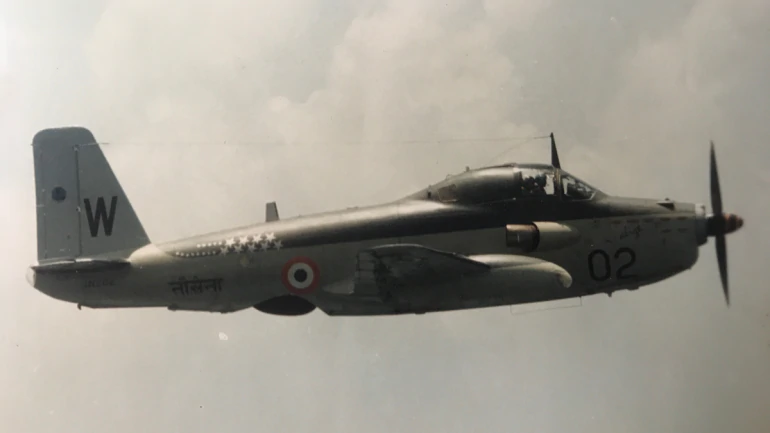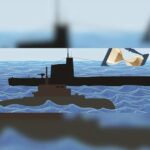
SOURCE: INDIA TODAY
Chief of Defence Staff General Bipin Rawat kicked off a storm recently when he suggested that naval assets could be deployed in support of the army along the China border and navy fighter jets could be deployed over the desert. Military veterans were aghast at the prospect of naval aircraft parked in desert airbases and flying missions in support of the army and air force.
The CDS has been here before. Speaking to the press in February this year, General Rawat cited the 2017 India-China Doklam standoff during which the Indian Navy’s US-built P-8I long range maritime patrol aircraft, used to track Chinese ships and submarines in the Indian Ocean, were deployed to monitor troop movements of the Chinese People’s Liberation Army in the Chumbi Valley. General Rawat, who has the task of integrating the three services into joint commands by 2023, used the P-8Is to illustrate how the army, navy and air force were unaware of each other’s capabilities.
However, the Doklam standoff was not the first time a naval platform had been deployed over land. In fact, over the decades, naval aircraft have seen unheralded deployments ‘to influence affairs on land’ as the navy defines one of its primary mission objectives.
THE ALIZE
In September 1965, Air Headquarters knocked on the navy’s doors asking the latter to loan a French-built Breguet Alize anti-submarine warfare (ASW) aircraft. The Alize, forerunners to the P-8I, carried a belly-mounted radar and an ARAR 11-D Electronic Support Measures (ESM) suite. The radar allowed the aircraft to track tiny objects such as the snort mast of a submarine on the ocean surface.
The eight ESM antennae, covered by tough plastic sheet, were located on the airframe and wings. Each antenna covered a 45-degree sector, giving the Alize a 360-degree coverage. Each location on the airframe had three antennae for passively sensing S, C and X band emissions from submarine radars, pinpointing their location.
These capabilities, the IAF had deduced in the ’60s, could also be used on land to locate radar stations. Soon after the 1962 border war with China, the Indian Air Force had used a lone Alize to spot Chinese radar stations along the Line of Actual Control.
“The Alize’s ARAR 11-D was the only ESM fit available with the Indian armed forces at that time,” says Commodore Bipin Bhagwat, a 1971 war veteran from the 310 ‘Cobras’ squadron that operated the ASW aircraft.
THE ’65 WAR
In September 1965, India was fighting off a determined bid by Pakistan to pry Jammu and Kashmir loose. After its plan to foment an insurrection within the Valley had failed the previous month, the Pakistan Army launched infantry and armour thrusts across the international boundary at Chhamb to sever the province from India.
The Indian Air Force found that their Gnats and Canberras were easily tracked by Pakistan’s formidable US-supplied radar network. The two main radar sites were at Sakesar in the north and Badin in the south near Karachi. And so, once again, the air force turned to the navy.
In early September, a naval pilot Lieutenant (later Rear Admiral) Sourirajulu Ramsagar and observer Lt Cdr Dilip Chowdhari, received an urgent message to take their Alize aircraft (tail number 006) to Agra on a classified mission. The flight crew included the radar operator Lt DN Rao. The aircraft carrier INS Vikrant was in refit in Mumbai and its aircraft scattered in Goa, Mumbai and Cochin.
The lone Alize flew into Agra on September 11. Rear Admiral Ramsagar remembers one significant meeting at the airbase. It was conducted by an IAF Air Commodore and included the naval flight crew, pilots from the Canberra bomber squadrons based there, and a naval aviator of the rank of Commander who had flown in from Naval Headquarters, Delhi. The meeting would be familiar to an officer in an inter-services briefing even today — unfamiliarity with each other’s equipment and turf wars, the result of decades of operating in silos.
The IAF officers explained how Pakistani radars were directing Sabre jets to intercept Indian Air Force aircraft through day and night. The air force officers had only a vague idea about the Alize’s capabilities and were startled when the young navy pilot described them. He not only had a radar, navigation equipment, and an ESM suite but could also carry weapons, including rockets, bombs, mines and depth charges.
The young pilot suggested the Alize home in on the radar sites and attack them with three 500-pound bombs. He was swiftly overruled by the senior officer from Naval HQ who turned to the IAF Air Commodore.
“Sorry sir, we can’t permit that — our aircraft are too precious to lose.” The navy’s concerns were that their slow-flying aircraft was extremely vulnerable to ground-based anti-aircraft fire and roving enemy fighters. “We are fighting a war and the navy doesn’t want to take part?” Rear Admiral Ramsagar recalls one agitated IAF officer saying.
The pilot would discover later how closely his service had missed joining the fray. The government had taken a political call not to deploy the navy during the ’65 war. Even so, eight Seahawk fighter jets from INS Vikrant were deployed at the India Air Force’s Jamnagar airbase, under the operational control of Western Air Command on September 3.
We are fighting a war and the navy doesn’t want to take part?
Three days later, the air force and navy completed plans for an air strike on the Badin radar station to be launched at dawn on September 7 when Pakistani bombers struck at Jamnagar. They missed hitting the Seahawks but the incident strangely forced the Western Air Command to cancel the Badin strike and send the naval aircraft back to Mumbai, an incident narrated in great detail in Vice Admiral Vinod Pasricha’s definitive account on the 300 Squadron, ‘Downwind Four Green’.
‘The Navy missed an ideal opportunity to prove the worth of naval aviation and the country missed an opportunity to strike a blow at Pakistan,’ Rear Admiral Satyindra Singh recounts in his 1992 book ‘Blueprint to Bluewater’.
THE ALIZE 006
Meanwhile, the Alize 006 that was sent to Agra on September 11 flew to Ambala air force station. From here it flew a total of four missions over the next week covering the international border from Pathankot to Jamnagar. The turboprop aircraft would take off at dusk and then fly for around three hours over the desert, always staying 15 kilometers on the Indian side of the border.
It was an interesting game of hide-and-seek, as the aircraft’s pilot Rear Admiral Ramsagar recalls. “We would soar up to 15,000 feet allowing ourself to be tracked by the Pakistani radars. As the radar beam locked on to us, our ARAR antennae located the position of the radar.”
Mission captain Lt Cdr Chowdhury who also operated the ESM set noted the radar positions on a plotting sheet, triangulated them to a target area of around 500 yards and handed these coordinates to the Indian Air Force at Ambala. They discovered for instance that there were three radar stations in and around the Pakistan Air Force’s heavily fortified airbase at Sargodha.
In less than 15 days of flying operations over totally unfamiliar territory, an unarmed naval aircraft had done 63 hours of night-flying in the face of grave danger and had accurately located eight Pakistani radar stations for the IAF
– Rear Admiral Ramsagar
The coordinates were further refined by the air force’s Canberra photo-reconnaissance aircraft sorties and used by them to mount strikes against the radars.
The official history of the IAF notes that two Canberras launched a September 19 night attack on Sakesar but failed to hit the target. They had much better success against the Badin radar station. At September 21 daylight, a Canberra hit the radar dome with its rockets and dropped bombs near the station.
After completing their sorties at Ambala, the Alize flew over and landed at Jodhpur air base where it was based for the next few days. It flew all along the Jaisalmer area and provided confirmation that the Badin radar station was back in action.
As Rear Admiral Ramsagar says, ‘In less than 15 days of flying operations over totally unfamiliar territory, an unarmed naval aircraft had done 63 hours of night-flying in the face of grave danger and had accurately located eight Pakistani radar stations for the IAF.’
The Alize continued operating for another 15 days after the September 23 ceasefire ended the war. It established, much to the IAF’s chagrin, that all the radar stations damaged during the war were now fully functional. The lessons learned from the 1965 war were not repeated during the 1971 war where the three services fought with a degree of jointness not seen either before or since.
AFTER THE ’65 WAR
Rear Admiral Ramsagar went on to become one of a handful of naval pilots to have been deployed in both the 1965 and 1971 wars. During the 1971 war, he and his observer Commodore Bhagwat operated off the INS Vikrant. They attacked and damaged a gunboat fleeing East Pakistan with depth charges, forcing it to surrender before returning to the carrier, their aircraft riddled with bullet holes. Both aviators were awarded Vir Chakras for conspicuous gallantry in the face of enemy fire.
The navy’s overland missions didn’t end with the 1965 war. Between 1999 and 2001, during the Kargil War and Operation Parakram, the 310 Squadron returned to the western border, this time with the Dornier Do-228 EW aircraft which had replaced the Alizes.
According to military writer Harish Balaji Kannan, ‘between May and July 1999, the squadron flew 174 missions totaling 357 hours’ along the international boundary with Pakistan running a series of Electronic Intelligence (ELINT) gathering missions in support of the army and the air force.
Three aircraft and 50 naval officers and men were deployed to forward air bases in Gujarat close to the Indo-Pak border. From here they located battle surveillance radars and troop concentrations flying from the Kutch border till Jaisalmer. These deployments could make INAS 310 the only Indian Navy squadron to be deployed in every theatre of war since its raising in 1960.
Besides promoting jointmanship, such out-of-theatre deployments in support of land operations help the navy gain valuable combat experience. The deployment of a small detachment of its Marine Commandos in Jammu and Kashmir might have seemed like a minor tactical move by the navy in 1999, but reaped strategic dividends a decade later.
The MARCOS were the first responders to the November 26, 2008 Mumbai terror attacks and intervened to save over 100 guests at the Taj Mahal hotel. Needless to say, all the naval commandos had seen active service in the Valley.
For the navy to miss a chance to deploy some of its assets northwards, would perhaps be what the 310 Squadron’s first ‘King Cobra’ or Commanding Officer Vice Admiral MK Roy described in his ‘War in the Indian Ocean’: ‘It is to understand trees by considering the wood as a whole.’
https://defencenewsofindia.com/when-the-indian-navy-flew-over-the-desert/






